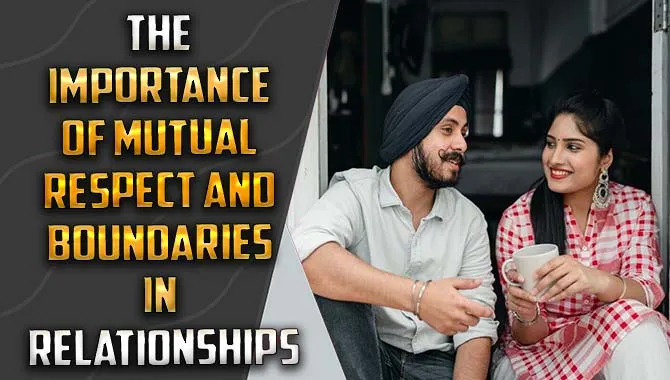The best way to communicate in a relationship involves active listening, expressing feelings clearly and respectfully, understanding your partner’s perspective, and finding constructive ways to resolve disagreements. Mastering these skills builds stronger connections and deeper intimacy.
Do you ever feel like you and your partner are speaking different languages? It’s a frustration many of us face. Misunderstandings can pile up, leading to hurt feelings and distance. But what if there were specific, easy-to-follow steps you could take to bridge that gap? The good news is, there are! Improving how you communicate in any relationship, whether it’s romantic, a close friendship, or even with family, is a skill you can learn. It’s all about understanding each other better and speaking from the heart. Get ready to discover proven tips that can transform your connections and bring you closer than ever before, starting right now.
Why Good Communication is the Cornerstone of Every Strong Relationship
Think of communication as the plumbing of a relationship – essential and often unnoticed until something goes wrong. When it’s working well, everything flows smoothly. When it’s blocked or leaking, problems arise quickly. In any friendship or romantic partnership, the ability to talk openly, honestly, and kindly is what allows trust, intimacy, and understanding to flourish. Without it, small issues can grow into huge chasms.
Many relationships stumble not because of a lack of love, but because of a lack of effective communication. We might assume our partner understands our thoughts or feelings, or we might shy away from difficult conversations, letting resentment simmer. This leads to feeling unheard, misunderstood, and disconnected. But here’s the encouraging part: just like any skill, communication can be learned and improved. It takes a little practice and a willingness to try new approaches. This guide will walk you through practical, beginner-friendly strategies to build and maintain healthy communication with the people you care about.
Understanding Your Communication Style
Before we dive into tips, it’s helpful to understand that everyone has a natural communication style. Recognizing yours, and that of your partner or friend, can be a game-changer. These styles aren’t rigid boxes, but rather tendencies that influence how we express ourselves and interpret others.
Here are a few common styles you might recognize:
- The Assertive Communicator: This person expresses their needs and feelings clearly and respectfully, while also being mindful of the other person’s rights and feelings. They are direct but not aggressive.
- The Aggressive Communicator: They tend to express their needs and feelings in a way that violates the rights of others. This can involve blaming, shouting, or being overly critical.
- The Passive Communicator: This person often avoids expressing their opinions or feelings, or they express them in an overly apologetic way. They may let others speak for them.
- The Passive-Aggressive Communicator: They appear passive on the surface but are actually acting out their anger in subtle, indirect ways, such as through sarcasm, procrastination, or sulking.
Knowing these styles helps you identify potential friction points. For example, an assertive communicator might get frustrated with a passive communicator who doesn’t voice their needs, while a passive-aggressive person might drive an assertive communicator crazy with their indirectness.
For a deeper dive into understanding interpersonal communication styles, resources from organizations like the American Psychological Association offer valuable insights into human interaction.
The “How-To” of Better Relationship Communication: Proven Tips
Now, let’s get practical! These tips are designed to be easy to implement, whether you’re just starting a relationship or have been with someone for years. They focus on creating a safe space for open dialogue and building genuine understanding.
1. Practice Active Listening Like a Pro
This is perhaps the most crucial skill. Active listening isn’t just hearing words; it’s about truly understanding the message being sent, both spoken and unspoken. It shows your partner they are valued and that you care about what they have to say.
What Active Listening Looks Like:
- Pay Full Attention: Put away distractions like your phone. Make eye contact (comfortably, not intensely). Turn your body towards them.
- Show You’re Listening: Nod your head, use verbal cues like “Uh-huh,” “I see,” or “Go on.”
- Ask Clarifying Questions: “What did you mean by that?” or “Could you tell me more about how that made you feel?”
- Paraphrase and Summarize: “So, if I understand correctly, you’re feeling overwhelmed because…” This ensures you’ve understood and gives them a chance to correct you.
- Avoid Interrupting: Let them finish their thoughts. It’s easy to jump in with your own story or solution, but resist the urge.
- Listen to Understand, Not Just to Respond: Your goal is to grasp their perspective, not just to formulate your rebuttal.
Active listening builds trust and validates your partner’s feelings. It makes them feel safe to open up.
2. Master the “I” Statement
Blaming language (“You always…” or “You never…”) can immediately put someone on the defensive. “I” statements shift the focus to your feelings and experiences, making it less accusatory and more about your personal needs.
How to Form an “I” Statement:
The basic structure is:
“I feel [emotion] when [specific behavior] because [impact/reason].”
Examples:
- Instead of: “You never help around the house!”
- Try: “I feel overwhelmed and unappreciated when the dishes pile up after dinner because it means I have to do them all later.”
- Instead of: “You always interrupt me when I’m talking!”
- Try: “I feel frustrated when I’m interrupted because I lose my train of thought and it feels like my input isn’t valued.”
Using “I” statements helps your partner understand the effect of their actions without feeling directly attacked. This opens the door for problem-solving rather than conflict.
3. Choose the Right Time and Place
Trying to have a serious conversation when one or both of you are stressed, tired, hungry, or distracted is a recipe for disaster. Picking the right moment increases the chances of a productive discussion.
When to Talk:
- When you’re both calm: Avoid bringing up sensitive topics when emotions are running high.
- When you have dedicated time: Don’t try to squeeze an important talk into a few minutes before work or bed. Set aside time when you won’t be rushed.
- In a private, comfortable setting: Choose a place where you both feel relaxed and won’t be overheard or interrupted unnecessarily.
When to Pause:
- If either of you is exhausted, stressed, or angry.
- If you’re in a public place or around others who shouldn’t be privy to your conversation.
- If the conversation is becoming circular or escalating without resolution.
It’s okay to say, “I need some time to think about this. Can we talk about it later tonight/tomorrow?” This shows maturity and a commitment to communicating effectively.
4. Be Honest, But Kind
Honesty is vital for trust, but the delivery matters immensely. What you say is important, but how you say it can determine whether the message gets heard or causes further damage.
The Balance of Honesty and Kindness:
- Frame feedback constructively: Instead of pointing out flaws, focus on behaviors and suggest improvements.
- Be specific: Vague criticism is unhelpful. Clearly state what the issue is.
- Focus on impact, not intent: Even if your partner didn’t mean to hurt you, you can still express how their actions made you feel.
- Offer reassurance: Remind your partner that you’re bringing this up because you value the relationship and want it to improve.
Kindness in communication isn’t about sugarcoating the truth. It’s about delivering it with respect and empathy, acknowledging the other person’s humanity and the value of your connection.
5. Learn to Validate Your Partner’s Feelings
Validation doesn’t mean you have to agree with your partner’s perspective, but rather that you acknowledge their feelings are real and understandable to them. This is incredibly powerful in de-escalating conflict and fostering empathy.
How to Validate:
- Acknowledge their emotions: Statements like “I can see why you’d feel that way,” “It makes sense that you’re upset,” or “I understand that this is difficult for you” can be very effective.
- Reflect their feelings: “It sounds like you’re feeling really hurt by that.”
- Show empathy: Try to put yourself in their shoes. What would you feel in their situation?
When your partner feels heard and understood, even if you don’t agree with their viewpoint, they are much more likely to be open to your perspective and to finding solutions together. For more on this, articles from relationship experts often highlight validation as a key building block for secure bonds.
6. Understand Non-Verbal Communication
A significant portion of communication happens without words. Your body language, tone of voice, and facial expressions can either support or contradict your spoken message.
Pay Attention To:
- Body Language: Are you crossing your arms (defensive)? Are you slouching (disinterested)? Or are you facing them with open posture (receptive)?
- Tone of Voice: Is your voice sharp and accusatory, or soft and caring? Sarcasm is a prime example of non-verbal communication causing issues.
- Facial Expressions: A sigh, an eye-roll, or a frown can convey a lot, often negative.
Be mindful of the signals you’re sending. If you’re trying to express care, ensure your tone and body language reflect that. Similarly, try to read your partner’s non-verbal cues to get a fuller picture of how they’re feeling.
7. Seek to Understand, Then Be Understood
This principle, popularized by Stephen Covey, is fundamental. Before you try to explain your own side, actively work to understand your partner’s point of view. This creates a foundation of mutual respect upon which your own needs can then be effectively communicated.
The Process:
- Partner A Shares: One person expresses their thoughts or feelings.
- Partner B Listens Actively: Partner B uses active listening skills and seeks to understand.
- Partner B Validates: Partner B acknowledges Partner A’s feelings (“I hear you saying that you feel…”).
- Partner B Seeks Clarification: Partner B asks questions to ensure full understanding.
- Partner B Summarizes: Partner B restates Partner A’s perspective in their own words.
- The Roles Reverse: Now, Partner A listens while Partner B shares their perspective, repeating the process.
This structured approach ensures both individuals feel heard and understood before moving towards problem-solving.
8. Learn Healthy Conflict Resolution
Disagreements are inevitable. The goal isn’t to avoid conflict, but to handle it in a way that strengthens your bond instead of damaging it.
Strategies for Healthy Conflict:
- Focus on the Issue, Not the Person: Attack the problem, not your partner.
- Brainstorm Solutions Together: Once both perspectives are understood, work collaboratively to find a compromise or solution.
- Be Willing to Compromise: Relationships often require give and take.
- Take Breaks If Needed: If the conversation becomes too heated, agree to pause and revisit it later when you’re both calmer. This is what’s known as a “cool-down period.”
- Apologize Sincerely When Wrong: A genuine apology can go a long way.
- Forgive: Holding onto grudges erodes relationships.
A helpful framework for conflict resolution is The Gottman Institute’s approach, which often emphasizes understanding the “meaning of life” for each partner, meaning their core values, dreams, and inner worlds. This deeper understanding can prevent conflicts from becoming personal attacks.
9. Express Appreciation Regularly
It’s easy to get caught up in the day-to-day and focus on what needs improvement. But consistently expressing appreciation for your partner is a powerful way to build positivity and strengthen connection.
Ways to Show Appreciation:
- Verbal “Thank Yous”: A simple “Thank you for making dinner” or “I really appreciate you listening to me” can make a big difference.
- Compliments: Notice and voice what you admire about them. “You handled that difficult situation so well,” or “I love your sense of humor.”
- Small Gestures: Doing a chore they usually do, bringing them a coffee, or leaving a sweet note.
- Quality Time: Dedicate focused time to your partner without distractions.
Appreciation acts as a buffer against stress and conflict. It reminds both of you why you’re together and reinforces positive behaviors.
10. Regular Check-ins are Key
Don’t wait for a problem to arise to talk about your relationship. Regular check-ins create a habit of open communication.
What to Discuss:
- How are you feeling? About the relationship, about life.
- What’s going well? Celebrate the positives.
- Are there any concerns? Address small issues before they grow.
- What can we do for each other this week? Focus on support and connection.
These conversations don’t have to be long or formal. A quick chat over breakfast or during a quiet evening can maintain a strong connection and prevent issues from festering.
Putting It All Together: A Communication Plan Snapshot
To make these tips actionable, consider creating a simple plan. This can be a mental checklist or something you discuss with your partner.
| Communication Skill | How to Practice | When to Use |
|---|---|---|
| Active Listening | Put phone away, make eye contact, paraphrase. | During any discussion, especially when emotions are involved. |
| “I” Statements | Use formula: “I feel… when… because…” | When expressing needs or discomfort about a specific behavior. |
| Validation | Acknowledge feelings: “I see why you feel…” | When your partner is upset or expressing a viewpoint. |
| Appreciation | Say “thank you,” give compliments. | Daily, or whenever something positive happens. |
| Conflict Resolution | Focus on issue, brainstorm solutions, compromise. | When disagreements arise. Pause if needed. |
Remember that consistency is more important than perfection. You’ll have days where communication doesn’t go as planned, and that’s perfectly normal.
Frequently Asked Questions About Relationship Communication
Q1: How often should partners communicate about their feelings?
There’s no magic number, but regular, open communication is key. Aim for daily connection, even if it’s brief, and dedicate time for deeper conversations as needed. Don’t wait for problems to arise.
Q2: What if my partner refuses to communicate or gets defensive?
This is challenging. Start by communicating your own feelings using “I” statements about their defensiveness. You could say, “I feel disconnected when we can’t talk about things, and I’m worried about us growing apart.” Encourage them to consider professional help like couples counseling if the pattern persists. Resources from sites like The Gottman Institute offer strategies for handling difficult communication patterns.
Q3: Is it okay to take a break during an argument?
Absolutely! If a conversation becomes too heated or unproductive, it’s a sign of maturity to agree to take a break. Set a specific time to come back to the discussion (e.g., “Let’s cool down for an hour and talk again after dinner”) to show you’re committed to resolving it.
Q4: How can I communicate my needs without sounding demanding?
Use “I” statements and focus on collaboration. Frame your needs as requests rather than demands, and explain why they are important to you. For example, “I would really appreciate it if we could schedule a date night once a week, because it helps me feel more connected to you.”
Q5: What’s the difference between active listening and just hearing someone?
Hearing is passive; you pick






